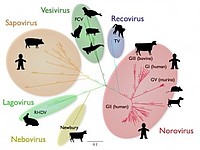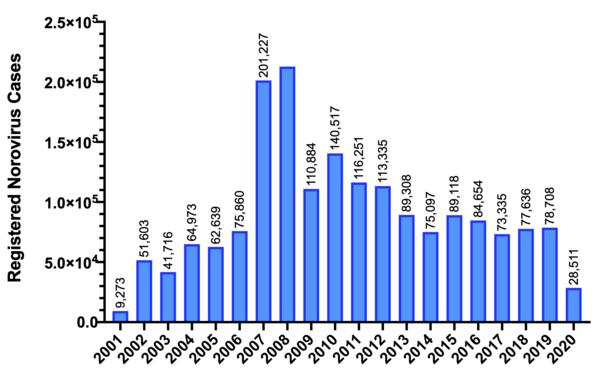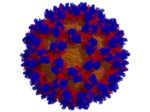
Caliciviruses:
Members of the Caliciviridae family are small (35-39 nm), icosahedral non-enveloped viruses with a single strand plus sense RNA genome. The name calicivirus is derived from the Latin word calix meaning cup or goblet, describing the cup-shaped depressions in the virus particle.
Caliciviruses have a wide hostrange and infect many species including humans and animals such as cows, pigs, cats, mice, marine mammals, and reptiles. Based on sequence homology and genome structure, this virus family is divided into five genera including lagovirus (i.e. Rabbit hemorrhagic disease virus, RHDV), vesivirus (i.e. feline calicivirus, FCV), nebovirus (i.e. Newbury-1 virus), sapovirus (i.e. Sapporovirus), and norovirus (i.e. Norwalk Virus). Two additional genera have also been proposed:recovirus (Tulane virus (TV), detected in stool specimens from rhesus monkeys) andvalovirus (i.e. the porcine St-Valérien-like viruses). These genera have yet to be officially approved and there are also other unclassified caliciviruses such as chicken caliciviruses. Norovirus and Sapovirus are so far the only genera that include human pathogenic caliciviruses.
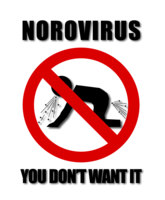
Human Noroviruses were first isolated after an gastroenteritis outbreak at a school in Norwalk Ohio in the early 1970?s. The isolated Norwalk strain is the prototype strain for this virus family. Human noroviruses are the predominant cause for food-born viral gastroenteritis worldwide. The virus is transmitted via the fecal-oral route usually by person-to-person contact or through contaminated food and water. Outbreaks often start in community settings such as kindergarden, retirement communities, hospitals, or cruise ships. Infections peak in the winter (also called winter vomiting disease) between October and March, yet the mechanism for this seasonality is not understood.
The classical norovirus infection starts with bouts of vomiting and diarrhea (2-bucket-disease) lasting about 24-48 hours but infection can also by asymptomatic. While there are efforts developing a new norovirus vaccines and antivirals there are currently no means to treat or prevent norovirus infections other than containing virus spread and treating patients by supplementing the fluid loss. One has to be cautious, While the symptomatic phase lasts only a short time, the virus can still be shed for weeks after infection.Worldwide there are an estimated 267 million infections each year leading to over 200,000 deaths predominantly in immunocompromised, infants and elderly (Center for Disease Control, CDC). In Germany Norovirus infections are notifyable and monitored by the public health authorities.
In 2012 there were 113,000 infections reported with an estimated 30 norovirus associated deaths per year (see Robert Koch Institut, RKI). Because noroviruses are highly contagious and very stable in the environment, they can spread and cause small and large epidemics. One epidemic started 2012 in the Berlin/Brandenburg area due to contaminated frozen strawberries in school meals leading to over 10,000 cases in just two months.
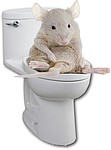
Our knowledge about norovirus biology is limited due the lack of an efficient tissue culture system. Murine noroviruses (MNV) are the only noroviruses that can be replicated in tissue culture and come with efficacious a small animal model. Our recently developed small animal model provides a foundation to build a platform to design and test anti norovirus antivirals and vaccines as well as learn about basic norovirus biology.
Murine Norovirus (MNV) Genome and Proteins (copy 1)
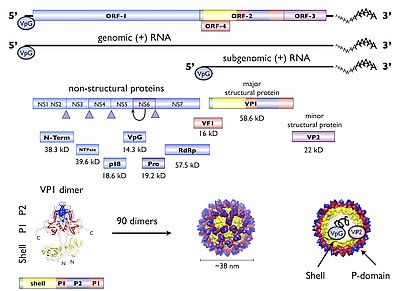

Group Leader
Prof. Dr. rer. nat. Stefan Taube
Professor for Structural and Molecular Virology
Institute of Virology and Cell Biology
Ratzeburger Allee 160
23562 Lübeck
Germany
Phone:
+49 451 3101 4020 (Office)
+49 451 3101 4001 (Secretary)
+49 451 3101 4021 (Lab)

